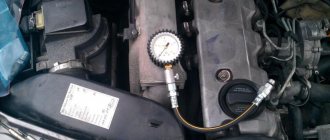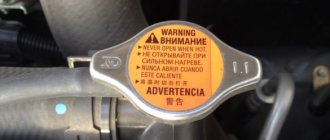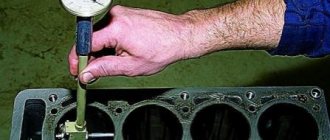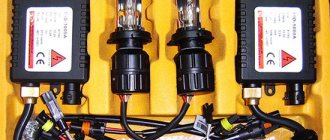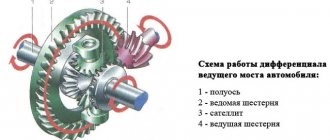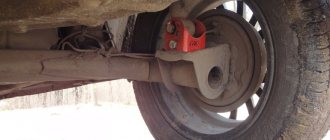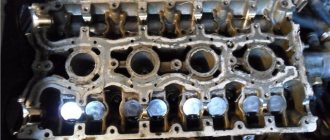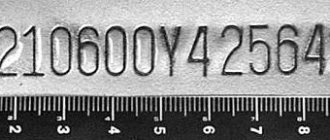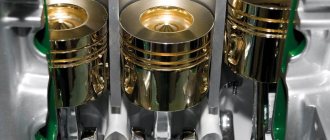How to choose the right sealant for the engine sump
Many world-famous manufacturers have long opted for polymer compounds for sealing elements of a car’s lubrication system, pushing the once traditional gaskets a step back.
In terms of their performance properties, liquid sealants are far ahead of classic gaskets. They harden easily if certain conditions are met, determined by the chemical formula of the product.
Engine sump sealants began to be produced not so long ago, but have already successfully conquered their niche, proving in practice their beneficial properties and effectiveness of use. The main purpose of such technical fluids is not only to replace failed gasket sets, but to prevent oil leakage through the valve cover of the oil pan housing.
Today, the market for automotive consumables and related materials offers a fairly large selection of sealants. They may differ from each other in color, temperature, constituent chemical elements, degree of elasticity, level of resistance and many other performance characteristics. Basic qualifications divide sealants into three main types.
Silicone
The most popular, both among professional craftsmen and novice car enthusiasts. It is very convenient to work with, as it contains natural ingredients. They quickly take on a solid form upon contact with moisture present in the air.
About ten minutes is enough for the required volume of liquid to accumulate. This time is enough to secure the necessary elements. But if you are working with large parts, then you should be more careful when working, because the liquid sealant can harden even before the two units are fixed.
If this does happen, it is recommended to remove any remaining hardened sealant from the surface before attempting to connect the parts a second time.
The main advantages of silicone-based sealant are:
- indicator of the maximum thickness of the gap that is planned to be filled with a sealed compound - up to 6 mm;
- withstands fairly high pressure, which is very important for modern power structures;
- the formation of an elastic seam with long-term performance characteristics, which means that oil will not flow through the cylinder head (cylinder head), crankcase gap and/or engine sections for a long period
When using silicone sealant, you must remember that it works effectively only on surfaces that have been previously cleaned of dirt and oil.
Anaerobic
It is more modern than the previous tool. While silicone-based sealants require moisture to harden, anaerobic sealants require the absence of oxygen. To fasten two parts, it is necessary to apply the composition to a previously cleaned surface. Then connect the surfaces as tightly as possible, thereby stopping the access of air so that the sealant begins to harden.
When working, extreme care is required, because if even a small gap is not eliminated in any place, thereby not closing the oxygen flow, the anaerobic sealant will remain in liquid form.
Despite the fact that only the absence of oxygen is necessary for the sealant to harden, you should not delay working with it. If the composition is applied in advance to the surfaces to be bonded, then dust or dirt may naturally get on them, which will significantly deteriorate the quality of fixation.
Therefore, it is recommended to apply liquid sealant immediately before gluing two surfaces. If everything is done efficiently, the resulting seam will have a high degree of elasticity, which is an undoubted advantage for further use.
However, anaerobic sealants also have a number of disadvantages. The main ones include:
- small thickness of the cavity, only 0.5 mm compared to 6 mm of silicone sealant;
- under conditions of high pressure, the composition may be disrupted;
- if the composition is applied unevenly, part of it may remain in its original liquid state
Heat resistant
When working with a car engine, it is more advisable to use sealants that have a high temperature index. They are able to withstand up to 375 0 C. In the case when it is planned to work with components and parts of the engine compartment, then it is possible to use a sealant with slightly low temperature indicators, for example, only 170 0 C.
When choosing a sealant from a particular manufacturer, it is recommended to carefully study the attached instructions. Some formulations are suitable for a certain make of car. To date, there are no serious problems in the availability of sealed compounds. You can buy them at a car store, service center, or order delivery from a catalog on various online resources that correspond to the topic.
You should give your preference to well-known brands that have been proven over the years. Of course, they are much more expensive than their Chinese counterpart. However, for the money spent you can be guaranteed to get a good quality sealant with high performance characteristics.
In order to insure yourself against purchasing a counterfeit at the price of a branded product, when purchasing, you should pay close attention to the presence of a hologram, barcode and other control markers on the packaging, which real manufacturers must apply to the packaging.
Advantages and disadvantages of sealants
Automotive silicone sealants are produced in the form of a mass of viscous substance, which is used to seal cracks, joints, etc. Neutral silicone will withstand elevated temperatures. Acid ones are rarely used when repairing cars, as they expose the metal to a corrosive coating. Also, this material cannot be painted on top.
Silicone mixtures are easy to apply and can be used to make repairs by novice craftsmen. But before application, thorough cleaning of the surface is required. The seam is flexible, can withstand high pressure, and retains its performance properties for a long time.
Anaerobic sealant for a car is used to repair the power apparatus. The advantage is that there is no time limit for repairs, since only pressing the metal parts tightly and stopping the oxygen supply helps the mixture harden. The seam is flexible, the connection is high quality and durable.
The disadvantages include the small permissible filling thickness of up to half a millimeter. If the compression area is large, it is difficult to achieve tight compression to completely remove air.
Sealant selection criteria
To select the appropriate material for repairing the engine lubrication system, you need to consider the following:
- The sealing compound must be resistant to temperature changes, shock loads and vibration.
- Create strong and elastic adhesion to surfaces of complex textures (metal of varying densities).
- Be resistant to moisture, oil, lubricants and coolants.
- Have an operating temperature range from -60 to +300 ⁰С.
- The chemical composition is neutral to elements made of cast iron, aluminum, steel.
You should not buy cheap engine sump sealant from unknown manufacturers. The high-quality composition has factory packaging indicating the country and name of the manufacturer, instructions and recommendations for use.
It is better to purchase repair products from large auto stores or branded car dealerships.
Oil pan sealants differ in chemical components, temperature tolerances, constituent chemical elements, degree of flexibility of the seam formed, and level of operating loads. Main types of repair trains:
Silicone
The silicones included in the paste for repairing the engine lubrication system give it a high degree of adhesion, the ability to maintain properties at sharply changing temperatures, dielectric properties, and chemical inertness.
This explains the great demand for this type of sealant among service station mechanics and car enthusiasts. The components in the composition polymerize due to moisture from the environment and quickly form a solid, sealed seam.
The silicone composition hardens within 8–12 minutes. Therefore, you need to connect the parts quickly enough so that it does not have time to set.
Advantages of silicone composition:
- Large surface area for sealing. The hole size can be up to 6 mm.
- Creates a flexible seam that can withstand deformation and forced loads.
- Gives hydrophobicity to the seam.
- Long service life.
- Hardening of the surfaces to be joined within 20 minutes.
Anaerobic
These clamps appeared on sale 4-5 years ago. An anaerobic engine sump sealant requires the absence of oxygen to be effective. To do this, the composition is applied to the adhesive surfaces, which are then compressed with force to squeeze out the air between them. Coupling occurs within 25–35 minutes.
If the application surface is uneven, oxygen may remain between the parts. This will prevent the sealant from completely curing.
Features of anaerobic sealant:
- Creates a flexible seam.
- The temperature when working with sealant for the engine oil system is not lower than 15 ⁰С.
- The size of the holes being machined is 0.1 mm.
- There is no need to rush when applying to parts, since the sealant retains its liquid base state when exposed to air. This is an advantage for working with large diameter parts.
Heat resistant
Since the engine is a source of elevated temperatures, the sealant for repairing its components must be heat-resistant.
These compositions have a working temperature tolerance of up to 380 ⁰C.
To work with elements of the bottom of the engine oil flask, materials with thermal stability indicators of up to 190 ⁰C are suitable.
Composition quality and price
Although all sealants have a common purpose, when choosing them you should consider where exactly they will be used.
Therefore, when purchasing, you should pay attention to the composition of the product.
Glue for glass and headlights
Based on consumer reviews and the experience of specialists, it is recommended to use silicone sealants or adhesive tape.
They have:
- Good elasticity and dielectric properties;
- High frost and heat resistance;
- Easy processing and high quality gluing.
For exhaust system
The exhaust system operates at fairly high temperatures, and the greatest load falls on the muffler. From the inside it heats up to 3000 C. This explains the frequent burnout of exhaust system elements.
A heat-resistant automotive sealant gasket is suitable for its repair. When using it, clamps and pipes will not stick to each other, and the sealing of the connections will be reliable.
Body seam sealants
There are several types of such means:
- Sprayable - applied with a gun, dries in air for 20 minutes. Used to repair the underbody, trunk, engine compartment;
- Tape – does not require drying, can be painted, also suitable for parts with a small radius.
Thread liquid glue
Automotive thread sealant allows you to securely fasten parts. Aerobic liquid pads are suitable for this purpose.
Review of common sealants
Today, most automakers also produce related components and materials for repairing their car brands. Therefore, you can purchase an original sealant personalized for your car brand.
If this is not possible, then analogues with similar properties will do.
Motor heat-resistant repair compound GOETZE (gray) made in Germany, Liqui Moli, Hi Gear and anaerobic Loctite have proven themselves to be quite good. The main advantages of these sealing pastes are:
- high adhesion strength;
- heat resistance (from -55 °C to +230 °C);
- fast curing;
- application using an auto-dispenser;
- no finishing of parts required; permissible surface roughness 8–40 µm (Ra).
The price of these products for the oil pan is 750–900 rubles.
Elring and REINZ (Germany) for the engine cost 350–500 rubles. They are not inferior in many respects to the previous ones. The only difference is that it takes longer to cure.
- High seam strength.
- Immunity to chemicals.
- Operating temperature range from -50 to + 200 ⁰С.
- Resistant to sudden temperature changes.
Abro sealant 5 years ago was a favorite among auto mechanics. Has high quality indicators. But over the past 3-4 years, many fakes have appeared. Therefore, buying Abro can be compared to a lottery. Its cost is 150–250 rubles.
Types of body sealants by application method
You can determine exactly how the sealant is applied by its texture and type of packaging. Also, the application method is always indicated in the instructions for use of the composition.
Sprayable moisture-curing sealant
Typically, such products are based on modern polymers. The compositions are one-component, contain a large amount of dry substances, therefore they quickly harden in air under the influence of humidity and form a very durable seam. Sprayable sealants are applied with a special spray gun. It is especially convenient to work with them in the area of the underbody, engine compartment, and trunk of a car.
Brush sealant
Such compositions are made on the basis of silicone and nitro rubber; they are sold in cans of 1 kg or larger. Sealants can be used to seal joining and weld seams, glue jumpers, flavors, pallets, seal the trunk, wheel arches. Usually the products are available in white, gray, black colors. They are applied with a brush, dry in literally 10 minutes and can be painted immediately.
Sealant tape
Applying sealant to a car often requires a lot of skill, otherwise the seam will not be perfectly smooth. If you don’t have confidence in your own skills, use tape, which is very easy to use. Tape sealant does not need to be lubricated with glue - it already has an adhesive base. Flexibility allows the material to be used in any location during body repairs. Immediately after gluing, the tape can be painted - it does not require drying.
Extruded sealants
Such compositions are sold in tubes and cartridges. To seal joints, seams, the material must be squeezed onto the parts to be joined manually or using a gun. The seam will be most uniform when using an air gun. Typically, such products are used to seal the seams of the hood, the inside of the doors, the engine compartment, and the trunk.
Town, Lite, Master, - Ace. Diesel engine ⇒ What sealant is best to lubricate the oil. pallet?
Post by Mikis » 04 Sep 2006, 08:43
Post by Raccoon » 04 Sep 2006, 20:41
Post by master » 05 Sep 2006, 12:51
Post by BUS left-handed » 05 Sep 2006, 16:15
Post by Bath attendant » 06 Sep 2006, 18:03
Mazda MPV 2001 year FS engine body LWEW-158985
better than Mazda MPV only it's the same but new
Post by Kvigoral » 06 Sep 2006, 20:37
Post by Mikis » 06 Sep 2006, 20:44
But I was thinking of making it easy. As I imagine this process (not cutting, but assembling), it becomes so sad. At the same time, as I understand it, it is no longer necessary to put a 5 mm layer of sealant?
As for sealants, I don’t agree. I use Permatex myself and friends, and it has never failed. By the way, in their line there is a special one for oils. pallets And gaskets, apparently, will have to be made, because... During dismantling, the pan and oil extinguisher were slightly jammed and scratched. I actually already straightened them, but I still couldn’t achieve a perfectly flat surface.
Post by Kvigoral » 08 Sep 2006, 18:04
Mikis: I was thinking of making it easy. As I imagine this process (not cutting, but assembling), it becomes so sad. At the same time, as I understand it, it is no longer necessary to put a 5 mm layer of sealant?
As for sealants, I don’t agree. I use Permatex myself and friends, and it has never failed. By the way, in their line there is a special one for oils. pallets And gaskets, apparently, will have to be made, because... During dismantling, the pan and oil extinguisher were slightly jammed and scratched. I actually already straightened them, but I still couldn’t achieve a perfectly flat surface.
Post by BUS left-handed » 08 Sep 2006, 19:46
Message IL-31 » 09 Sep 2006, 15:26
A little late with the entry, but better late than never (the embittered type - but it would be better if I didn’t write - let’s move on
